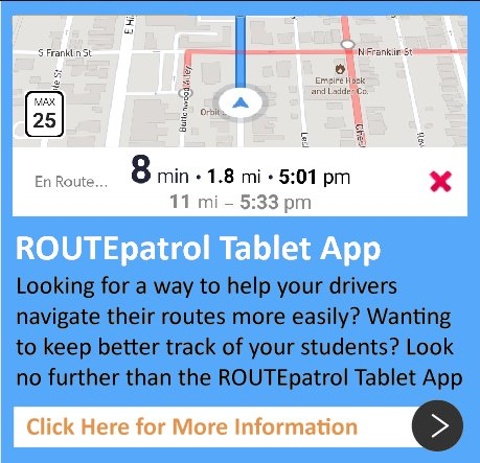Navigating the Challenges: How Bus Routing Software Adapts to Weather and Traffic
published on January 05, 2024 by Sonia Mastros
Transportation Management Software, BusBoss, school bus routing software, GPS Tracking, school bus tracking software, student transportation software, GPS Student Tracking, Student School Bus Safety, route efficiency, school bus route planning software, school bus route optimization, school bus route scheduling software
At this point, the issue of creating static school bus routes has been largely solved. Modern bus routing software can work with even the largest districts, chewing through thousands of potential routes for hundreds of buses to deliver optimized solutions. These static routes can even be created based on specific needs, such as routing around high-crime areas or avoiding highways that are prone to traffic jams.
But what about unexpected contingencies? What happens if an accident causes a sudden traffic jam a couple of blocks away, or a weather disaster makes part of a route unsafe? Drivers are often left to their own devices or forced to manually adjust their mapping software while still driving.
This is an obvious safety issue that needs to be addressed, and very soon it will be: The next big thing on the horizon for bus routing software is dynamic routing, and it’ll be here soon!
How Dynamic Routing Will Revolutionize School Bus Routing Software
The concept behind dynamic routing is simple. As smart computer systems process more and more data from different sources, it becomes possible for them to engage in more proactive decision-making.
For example, many consumer-level mapping systems like Google Maps now offer live traffic alerts. The same concept can be applied to bus routing. Smart systems monitor user-defined problem situations like sudden traffic jams in the middle of a bus route. These systems can utilize the same route-defining algorithms to quickly derive a new next-best route that avoids the problem area entirely.
This new route is pushed to the driver in real time as an alert. The driver probably isn’t even aware of the problem yet but has already been handed a solution that avoids trouble and keeps the bus on schedule.
The benefits this will bring to districts are numerous:
- Better administrative oversight – Workers in your office typically have no idea about specific traffic conditions on the road. Dynamic routing systems will also keep them in the loop and better able to understand what’s happening with your buses.
- Improved safety – This one is twofold. First, the dynamic routing system will prevent the bus from getting into many dangerous situations. It also means the driver does not get distracted trying to come up with a detour. The driver simply follows the updated map.
- More on-time bus stops – If the driver can entirely avoid delays or hazards, it means more students are dropped off on time, reducing calls from anxious parents.
- Ongoing routing improvements – As the dynamic routing system brings in more data, it’ll be capable of more proactive actions while focusing on further optimizations.
In short, dynamic routing software is going to be a huge next step for school bus management. We’re looking forward to bus routing becoming even more safe in the future.
What do you think? Would your district trust a smart AI system to make route changes on the fly?



